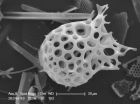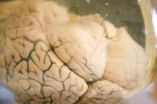(Press-News.org) Citrus is the world's most widely cultivated fruit crop. In the U.S. alone, the citrus crop was valued at over $3.1 billion in 2013. Originally domesticated in Southeast Asia thousands of years ago before spreading throughout Asia, Europe, and the Americas via trade, citrus is now under attack from citrus greening, an insidious emerging infectious disease that is destroying entire orchards. To help defend citrus against this disease and other threats, researchers worldwide are mobilizing to apply genomic tools and approaches to understand how citrus varieties arose and how they respond to disease and other stresses.
In a study published in the June 2014 edition of Nature Biotechnology, an international consortium of researchers from the United States, France, Italy, Spain, and Brazil analyzed and compared the genome sequences of ten diverse citrus varieties, including sweet and sour orange along with several important mandarin and pummelo cultivars. The consortium, led by Fred Gmitter of the University of Florida Citrus Research and Education Center, found that these diverse varieties are derived from two wild citrus species that diverged in Southeast Asia over five million years ago.
The U.S. Department of Energy Joint Genome Institute (DOE JGI) contributed to the citrus pilot project, Gmitter said, harnessing their expertise in plant genomics and capacity for high throughput sequencing. Initial support for the citrus effort arose 10 years ago under the auspices of the inaugural round of the Community Science Program (CSP—formerly the Community Sequencing Program), which seeks to build scientific communities around cornerstone species of relevance to DOE missions in bioenergy, carbon cycling and biogeochemistry. There is a fledgling industrial effort underway in Florida to redirect the five million tons of annual citrus waste generated there from low-value cattle feed to produce ethanol for fuel. The research team's citrus trait analysis will inform breeding strategies beyond important agronomic traits.
One of these wild species gave rise to cultivated pummelo, the largest citrus fruit that can often range from two to four pounds. Surprisingly, the small, easily peeled mandarins were, in contrast, found to be genetic mixtures of a second species and pummelo. Sweet orange, the most widely grown citrus variety worldwide, was found to be a complex genetic hybrid of mandarin and pummelo, presumably accounting for its unique qualities. Seville or sour orange, commonly used in marmalade, was found to be an unrelated interspecific hybrid.
Since citrus varieties are reproduced asexually by vegetative propagation, trees producing a specific type of fruit are typically genetically identical. This growing strategy produces a uniform, high-quality fruit, but has the drawback that if one tree is susceptible to disease, they all are. By inferring the past hybridization events that gave rise to these common citrus varieties -- either in the wild populations before domestication, or in early undocumented human-directed breeding efforts -- the team hopes to enable strategies for improving citrus, including resistance to greening and other diseases. "Now that we understand the genetic structure of sweet orange, for example, we can imagine reproducing the unknown early stages of citrus domestication using modern breeding techniques that could draw from a broader pool of natural variation and resistance," Gmitter said.
The genomes presented in the published study included pummelos, oranges and mandarins. One of the sequences was the high-quality reference genome of Clementine mandarin sequenced by an international consortium including Genoscope in France, the Institute for Genomic Applications in Italy, the DOE JGI, and the HudsonAlpha Institute for Biotechnology, with contributions from researchers in Spain and Brazil. Another was the sweet orange genome, produced jointly by researchers at the DOE JGI, the University of Florida, and 454 Life Sciences, a Roche company. By understanding the relationships between the various cultivated species with what they describe as "very narrow genetic diversity," the researchers hope to enable sequence-directed improvement, which could lead to crops that are more resistant to disease and stresses such as environmental changes.
The analyses revealed that while pummelos represent a single citrus species (Citrus maxima), the same cannot be said of cultivated mandarins, even those long held as not having intermixed with other varieties. Comparing sequences of so-called "traditional" mandarins such as the Asian cultivar Ponkan and the Mediterranean cultivar Willowleaf with mandarins known to be developed hybrids indicated that all contain segments of the pummelo genome. The "wild" Mangshan mandarin from China is an exception to the rule, as its genome revealed it was in fact a separate species from other cultivated mandarins.
The findings echo Gmitter's quip when he spoke at the DOE JGI's 7th Annual Genomics of Energy & Environment Meeting in March 2012. "Citrus has incestuous genes," he told the audience. "Nothing is pure."
INFORMATION:
For more information about the Clementine mandarin and sweet orange genomes, visit Phytozome at phytozome.net. To revisit Fred Gmitter's talk at the DOE JGI 2012 Genomics of Energy & Environment Meeting, go to http://bit.ly/JGI7Gmitter.
Retracing early cultivation steps: Lessons from comparing citrus genomes
2014-06-08
ELSE PRESS RELEASES FROM THIS DATE:
Warming climates intensify greenhouse gas given out by oceans
2014-06-08
Rising global temperatures could increase the amount of carbon dioxide naturally released by the world's oceans, fuelling further climate change, a study suggests.
Fresh insight into how the oceans can affect CO2 levels in the atmosphere shows that rising temperatures can indirectly increase the amount of the greenhouse gas emitted by the oceans.
Scientists studied a 26,000-year-old sediment core taken from the Gulf of California to find out how the ocean's ability to take up atmospheric CO2 has changed over time.
They tracked the abundance of the key elements silicon ...
Study reveals rats show regret, a cognitive behavior once thought to be uniquely human
2014-06-08
New research from the Department of Neuroscience at the University of Minnesota reveals that rats show regret, a cognitive behavior once thought to be uniquely and fundamentally human.
Research findings were recently published in Nature Neuroscience.
To measure the cognitive behavior of regret, A. David Redish, Ph.D., a professor of neuroscience in the University of Minnesota Department of Neuroscience, and Adam Steiner, a graduate student in the Graduate Program in Neuroscience, who led the study, started from the definitions of regret that economists and psychologists ...
A tiny molecule may help battle depression
2014-06-08
Levels of a small molecule found only in humans and in other primates are lower in the brains of depressed individuals, according to researchers at McGill University and the Douglas Institute. This discovery may hold a key to improving treatment options for those who suffer from depression.
Depression is a common cause of disability, and while viable medications exist to treat it, finding the right medication for individual patients often amounts to trial and error for the physician. In a new study published in the journal Nature Medicine, Dr. Gustavo Turecki, a psychiatrist ...
Targeting tumors using silver nanoparticles
2014-06-08
(Santa Barbara, Calif.) — Scientists at UC Santa Barbara have designed a nanoparticle that has a couple of unique — and important — properties. Spherical in shape and silver in composition, it is encased in a shell coated with a peptide that enables it to target tumor cells. What's more, the shell is etchable so those nanoparticles that don't hit their target can be broken down and eliminated. The research findings appear today in the journal Nature Materials.
The core of the nanoparticle employs a phenomenon called plasmonics. In plasmonics, nanostructured metals such ...
Quick getaway: How flies escape looming predators
2014-06-08
When a fruit fly detects an approaching predator, it takes just a fraction of a second to launch itself into the air and soar gracefully to safety—but there's not always time for that. Some threats demand a quicker getaway, even if things get a little clumsy. New research from scientists at the Howard Hughes Medical Institute's Janelia Research Campus reveals how a quick-escape circuit in the fly's brain overrides the fly's slower, more controlled behavior when a threat becomes urgent.
"The fly's rapid takeoff is, on average, eight milliseconds faster than its more controlled ...
More than just a hill of beans: Phaseolus genome lends insights into nitrogen fixation
2014-06-08
"It doesn't take much to see that the problems of three little people doesn't add up to a hill of beans in this crazy world," Humphrey Bogart famously said in the movie Casablanca. For the farmers and breeders around the world growing the common bean, however, ensuring that there is an abundant supply of this legume is crucial, both for its importance in cropping systems to ensure plant vitality and for food security. Moreover, the U.S. Department of Energy Office of Science has targeted research into the common bean because of its importance in enhancing nitrogen use ...
Argument with dad? Find friendly ears to talk it out, study shows
2014-06-06
With Father's Day approaching, SF State's Jeff Cookston has some advice for creating better harmony with dad. In a recent study, he found that when an adolescent is having an argument with their father and seeks out others for help, the response he or she receives is linked to better well-being and father-child relationships.
Adolescents who receive an reason for the father's behavior or a better understanding of who is at fault feel better about themselves and about dad as well. Those feelings about dad, in turn, are linked to a lower risk of depression for youth.
The ...
Scientists reveal details of calcium 'safety-valve' in cells
2014-06-06
UPTON, NY -- Sometimes a cell has to die-when it's done with its job or inflicted with injury that could otherwise harm an organism. Conversely, cells that refuse to die when expected can lead to cancer. So scientists interested in fighting cancer have been keenly interested in learning the details of "programmed cell death." They want to understand what happens when this process goes awry and identify new targets for anticancer drugs.
The details of one such target have just been identified by a group of scientists from the U.S. Department of Energy's Brookhaven National ...
Brain traffic jams that can disappear in 30 seconds
2014-06-06
BUFFALO, N.Y. – Motorists in Los Angeles, San Francisco and other gridlocked cities could learn something from the fruit fly.
Scientists have found that cellular blockages, the molecular equivalent to traffic jams, in nerve cells of the insect's brain can form and dissolve in 30 seconds or less.
The findings, presented in the journal PLOS ONE, could provide scientists much-needed clues to better identify and treat neurodegenerative diseases such as Alzheimer's and Huntington's.
"Our research suggests that fixed, permanent blocks may impede the transport of important ...
LSU biologist John Caprio, Japanese colleagues identify unique way catfish locate prey
2014-06-06
BATON ROUGE – Animals incorporate a number of unique methods for detecting prey, but for the Japanese sea catfish, Plotosus japonicus, it is especially tricky given the dark murky waters where it resides.
John Caprio, George C. Kent Professor of Biological Sciences at LSU, and colleagues from Kagoshima University in Japan have identified that these fish are equipped with sensors that can locate prey by detecting slight changes in the water's pH level.
A paper, "Marine teleost locates live prey through pH sensing," detailing the work of Caprio and his research partners, ...




